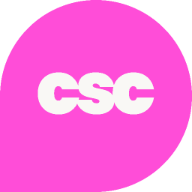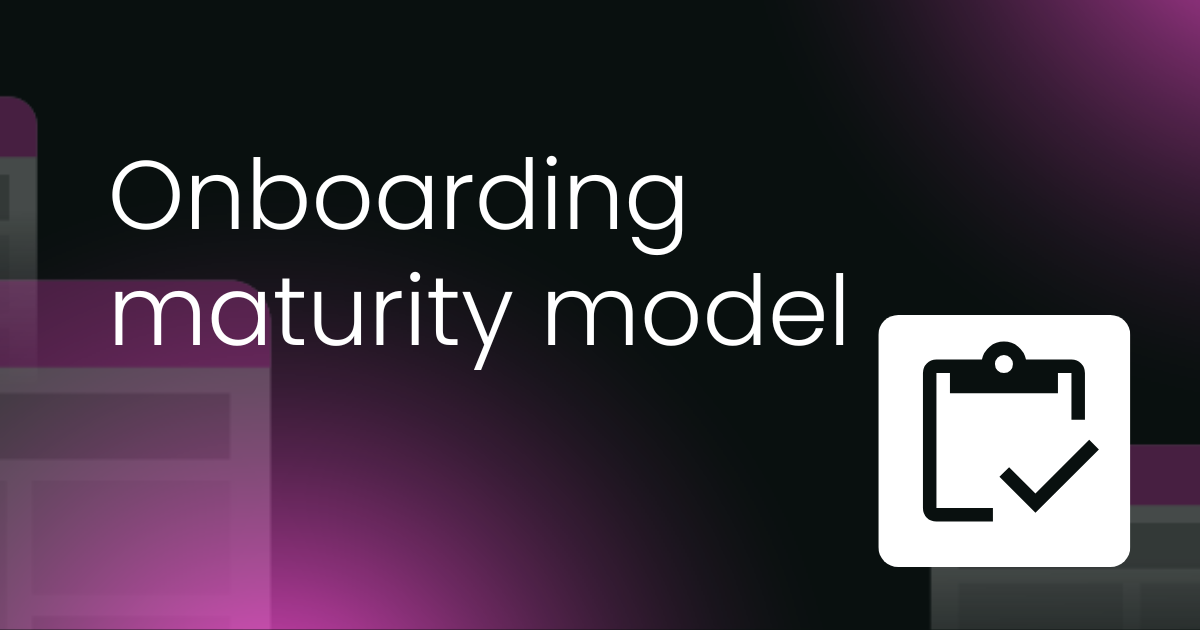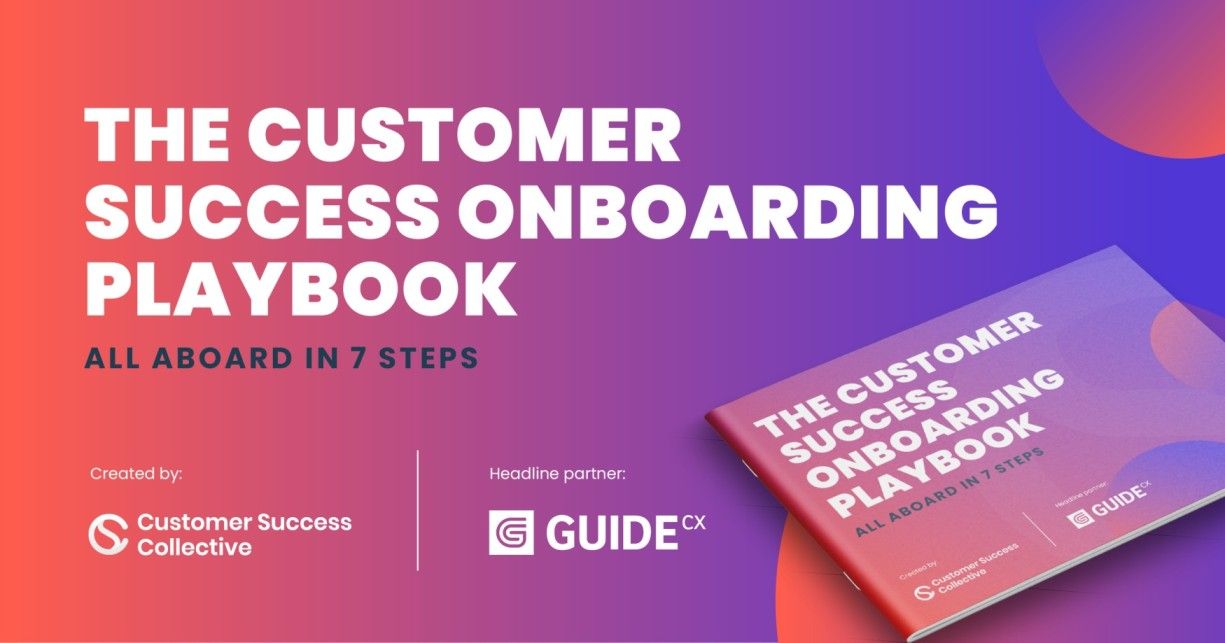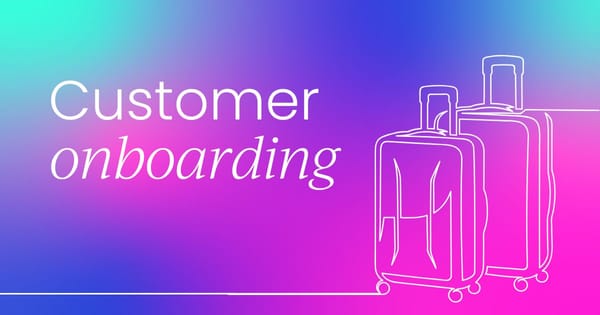Onboarding is a make-or-break moment in the customer lifecycle. Those critical early experiences after purchase can set the tone for the entire relationship – and impact downstream renewal and referrals.
Yet despite its paramount importance, many companies squander the potential of a smooth onboarding experience by presenting the customer with disjointed, inconsistent, and prolonged processes that only serve to frustrate them. For customer success teams seeking to boost adoption, retention and expansion, optimizing onboarding is a major opportunity.
In this comprehensive guide, we'll first define customer onboarding, before exploring a range of proven best practices to create onboarding programs that consistently deliver phenomenal first experiences. You'll learn how to create customer onboarding processes, build engagement plans, and demonstrate value.
With the right onboarding program, you can reduce time-to-value, drive adoption and engagement, surface risks early, and establish strong customer habits. The result is higher renewal rates, increased lifetime value, and faster growth fueled by enthusiastic brand ambassadors. Follow our step-by-step guide to transform onboarding into a driver of customer success.
In this guide, we're going to go into:
- What customer onboarding is
- How to map the onboarding journey
- How to create a customer onboarding process
- What live onboarding sessions are
- Important customer onboarding metrics
- Types of customer onboarding specialist roles
- Key stakeholders in the onboarding process
- How to reduce time-to-value (TTV)
- Templates to help guide customer onboarding
- Customer onboarding software recommendations
- How to automate your onboarding process
What is customer onboarding?
While we hail customer retention as the bread and butter of CS, getting to that ideal point of consistently retaining customers won’t happen without a thorough, strategic onboarding process.
Customer onboarding covers the following:
- Welcoming customers
- Setting up passwords and profiles
- Learning how to log in
- Getting oriented with navigating product dashboards and menus
- Learning to use product features
- Becoming familiar with support tools and in-app messaging
As a new customer, being left to your own devices without product guidance is no fun whatsoever. A poorly designed onboarding process is detrimental during this formative stage – and when left untreated, can lead to low product engagement and increase the chances of customer churn.
In this phase in the post-sales process, companies channel their efforts into helping the customer derive as much value from the product as possible. The onboarding period is a CSM’s chance to empower the customer straight away. After the sales conversion, it’s the job of the CSM to make sure the customer is guided through the product and feels confident using it, leading to a higher chance of product adoption.
The point of onboarding is to figure out what the customer wants out of your product and how you (the CS representative) can help them reach their ultimate goals. Shari Srebnick, Head of Client Success (US) at Searchmetrics, succinctly describes the process as follows:
“Onboarding is a crucial stage in customer success, and as such, it mustn't be taken lightly. Like any complex process, it must be broken down into clear, achievable milestones which will motivate the customer to stay on this journey. It’s about making that customer a believer in you and your product.”
Mapping the onboarding journey
As any CSM knows, onboarding doesn't happen in a vacuum. Instead, it's a journey that should seamlessly integrate with your broader customer experience. That's why taking a strategic approach to mapping the onboarding process is essential – and you can do this by following three key steps.
Define your onboarding roadmap
Your onboarding roadmap provides an overarching view of the journey and sets milestones for both customers and your implementation teams. Be sure to clearly outline all phases, from initial access and configuration through training, adoption, and expansion. Identify all the prerequisites that must be completed before moving to the next stage.
Identify key milestones and KPIs
Attach specific metrics and measurable goals to your roadmap. This could include objectives like completing setup within X days, driving Y% adoption of key features within a set timeframe, or having customers ready for expansion within Z months. Outline the specific milestones that must occur for each KPI to be achieved.
Document cross-functional workflows
Map out how different roles and teams will intersect during each onboarding phase. Show any hand-offs between sales, onboarding specialists, support, success managers, and others. Also, be sure to build standardized processes and guardrails so onboarding remains consistent even when it might involve numerous stakeholders.
Taking this strategic approach will ensure that the onboarding process is not only purposeful but also coordinated across the customer lifecycle. It will also facilitate accountability by establishing clear metrics and workflows for involved teams. The end result is a streamlined journey that aligns with customer and company goals.
How do you create a customer onboarding process?
There are several ways to enhance the customer’s experience and smoothly allow them to acquaint themselves with your product.
How you delegate the responsibilities of the customer onboarding process will depend entirely on the structure of your CS team and the scale of your company. Additionally, you could have a dedicated customer onboarding specialist for large accounts that require a bespoke onboarding approach or subscribe to a high-touch engagement model.
To implement an onboarding process from scratch, you should take a look at adopting the following measures to introduce your customers to your product:
- A welcome email
- Product tutorial
- Documentation
- The very first login
- Supporting emails providing user tips
- Notifications
Remember to personalize the experience for each customer, but don’t overwhelm them with information. Support them at every step of the way – not everyone learns and processes information in the same way. And above all, don’t forget to celebrate their wins: encouragement doesn’t cost a thing!
Mutual engagement plans
A mutual engagement plan is a brilliant approach to managing customer expectations and aligning your outcomes.
Let’s face it, we’ve all been in situations where we’ve been promised the Earth, and in reality, these promises weren’t fulfilled. In the business world, not sticking to deadlines or targets is a sure way to alienate customers, and cultivate an atmosphere of distrust.
Bryant McCombs, Manager of Customer Success at MongoDB, has spoken extensively about this topic in his presentation at the Customer Success Festival in June 2021.
He argues that mutual engagement plans function as the perfect opportunity to set the tone for the engagement, allowing you to introduce yourself and the company’s mission statement and describe what customer success looks like with your respective product. These plans allow you to implement personalized milestones that both you and the customer can visualize and work toward.
Having a traceable, concrete plan provides the customer with an assurance that you are at the helm of their progress, and are dedicated to accountability and their eventual success.
A smooth sales-to-customer success handover
It can be intensely irritating when you’re passed pillar to post between different representatives of a company. Not only does it exhaust the customer, but it suggests a lack of internal communication in your company, verging on incompetence.
If there isn’t a seamless handover between sales and customer success, the customer isn’t going to have a positive experience. You want to instill confidence in your customers; they need the reassurance that they’re being transferred into capable hands.
Michelle Wideman, Chief Customer Officer at Silverfox, puts it:
“Whatever CRM/application you’re using it’s important to have alignment between the pre-sales team, customer success, and post-sales team on what fields must be populated to help to ensure the proper flow of communication on the key components of a customer’s environment and desired business outcomes.”
Demonstrate value
Needless to say, getting your customer excited about your product is pretty darn important — no question about it. But in reality, that’s only half the battle. The key to a well-executed onboarding strategy? Explicitly demonstrate the value the customer will get out of using the product by doing "X, Y, Z" and show exactly how it is a solution to their previous pain points.
Providing relevant examples is a clear way to articulate your agenda, and this specificity is what will keep the customer engaged and motivated to progress with their product initiation.
Opportunities to instill product value can arise on kick-off calls, during specialized training sessions, or in personalized in-app messaging.
Live onboarding sessions
Nothing beats real-time conversation for connecting with new customers during onboarding. Sure, documentation and training materials play an important role, but live sessions are a game-changer.
When experts can answer specific questions and tailor guidance, customers feel heard and understood. Interactive sessions facilitate collaboration, align expectations, and build accountability on both sides. By talking through goals and challenges together, you ensure customers are fully supported and onboard successfully.
Based on research we conducted in the State of Customer Onboarding 2023, nearly all customer success professionals surveyed (90.6%) provide live onboarding sessions for their customers.

The fact that an overwhelming majority of customer success professionals surveyed say they provide live onboarding sessions suggests a few key points:
- Live onboarding is considered a best practice and a standard part of the customer onboarding process at most organizations. There is a clear consensus that real-time interaction is critical.
- Companies recognize the tangible benefits of live sessions for driving customer engagement, satisfaction, and retention. The proof is in the data - live onboarding works.
- Technology has made virtual live sessions extremely accessible and convenient for both customers and companies. There are fewer barriers or downsides compared to past eras.
- Due to this prevalence, customers will likely expect and demand live interaction as part of the onboarding experience today. In this case, not including live interaction could make a company an outlier.
- There’s likely intense competition in onboarding experiences. Companies aim to stand out and build loyalty through high-touch onboarding with interactive sessions.
The clear preference for live onboarding underscores its importance for initiating strong customer relationships and setting companies apart in a crowded market. It's becoming a must-have rather than a nice-to-have.
According to Kimberley Francis, Live Training Guide at GUIDEcx:
"Live onboarding sessions offer a unique opportunity for your customers to actively engage, ask questions, and collaborate seamlessly through project phases – reducing confusion and removing potential hurdles.
"This personalized approach not only ensures your customers feel acknowledged and valued but also empowers them towards a confident implementation."
Customer onboarding metrics
After putting in the effort to design and implement a customer onboarding process, it is critical to measure how effective the process is at achieving key goals. Tracking onboarding metrics provides insight into what is working well and what can be improved in the onboarding journey.
Some important onboarding metrics to monitor include:
Activation rate
The percentage of new signups that complete a desired action, such as completing their profile, logging in for the second time, or subscribing to a paid plan. This metric indicates how successful onboarding is at getting customers to find value and actively engage with the product.
Time to first action (TTFA)
The time it takes from signing up to when the customer completes their first meaningful action. Shorter time periods indicate the onboarding flow is effective at quickly conveying the product's core value.
Onboarding completion rate
The percentage of new signups that complete the full onboarding process. This could include completing their profile, connecting to other product features, or finishing an interactive tutorial. Higher completion rates show that users are finding the onboarding experience welcoming and seeing value in becoming more established users.
Onboarding dropout rate
The percentage of users that drop out at each step of the onboarding flow. Analyzing trends can identify pain points or confusing parts of the onboarding that need refinement.
Surveying users during and after onboarding can provide additional qualitative data to understand perceptions, friction points, and reasons customers fail to progress.
Continuously monitoring onboarding metrics identifies wins to double down on and opportunities to iterate and improve. This ensures the onboarding process effectively converts new visitors into engaged, long-term users.
Customer onboarding specialist roles
Many companies are beginning to recognize the importance of a smooth customer onboarding experience and have dedicated teams or specialists focused solely on guiding new customers from purchase to value realization.
In our 2023 exploration into the State of Customer Onboarding, we were aware of the rise of these roles, we were curious to properly investigate their prevalence.
We asked our survey participants if their company has a dedicated team for onboarding or an “onboarding specialist” role.
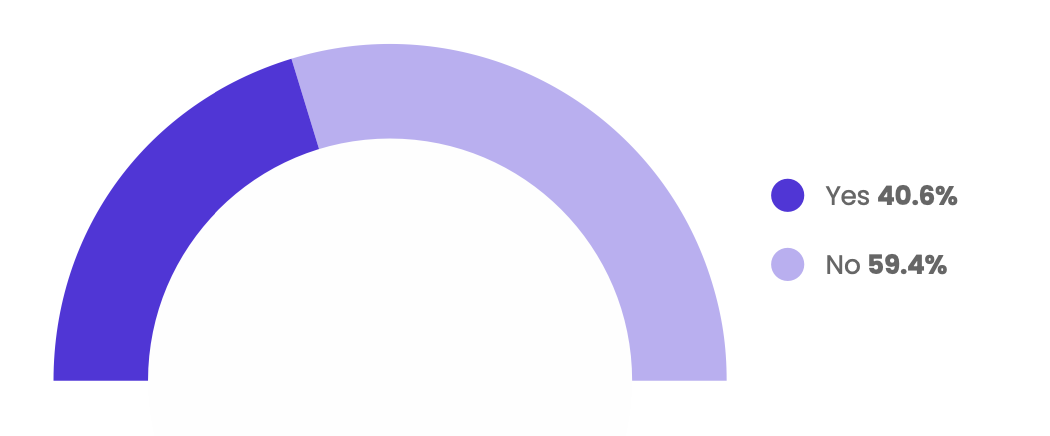
59.4% of customer success functions don’t have a specialist onboarding role or team. This suggests that while roles like Onboarding Managers, Implementation Managers, and Customer Education Specialists are becoming more commonplace, the clear majority of customer success professionals don’t have these dedicated, more defined roles, highlighting an opportunity for many companies to further invest in onboarding.
Key stakeholders during customer onboarding
Just like Toto in The Wizard of Oz (1939), in the State of Customer Success 2023 we pulled back the curtain to reveal who exactly crafts the onboarding magic in CS teams. We wanted to know which key stakeholders the customer should be meeting.
It’ll come as no surprise that the clear majority was the Customer Success Manager (82.8%), with the Sales Representative not being as necessary post-conversion.
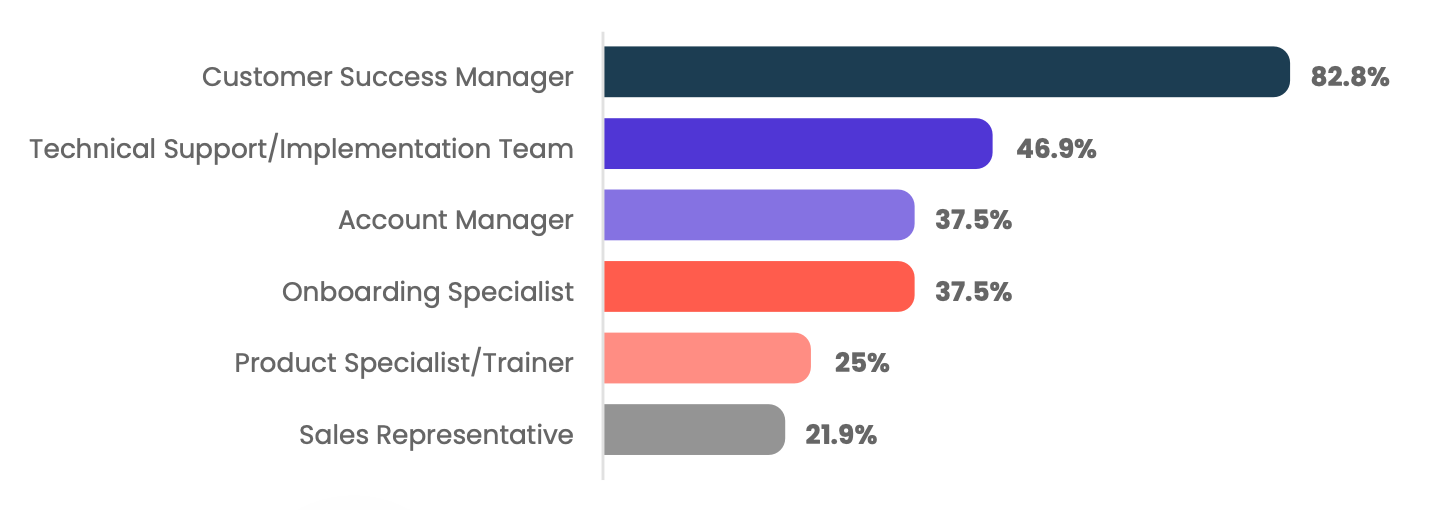
While it might be surprising that only 37.5% of customer success professionals consider Onboarding Specialists to be key stakeholders whom the customer should meet, this might be due to the fact that not many businesses have dedicated onboarding specialist roles or teams.
Perhaps this figure of 37.5% is an indication that the operational side of customer success is still evolving, and this could change as onboarding becomes more of a core business priority.
Reducing time to first value (TTFV)
The time it takes for customers to experience the initial benefit from a product is critical for SaaS companies.
With so many options, SaaS customers quickly abandon products that don't demonstrate value. An effective onboarding process that helps users achieve quick wins can improve TTFV.
Companies should identify the point where customers first recognize value, calculate current TTFV based on milestones or engagement metrics, evaluate onboarding gaps, create tailored plans to accelerate value realization and implement best practices like simplification and transparency. Optimizing onboarding to improve TTFV boosts customer satisfaction, retention, and lifetime value.
Time to first value matters. Period. Here's a simple five-step approach for SaaS companies to improve it:
- Pinpoint the first value moment
- Calculate current TTFV
- Review onboarding process gaps
- Create plans for customer segments
- Apply onboarding best practices like clear expectations and intuitive interfaces
Taking these steps to accelerate value discovery enhances the customer experience and long-term relationship.
What is customer onboarding software?
Some might say a bad workman always blames his tools, but customer success simply couldn’t function effectively without the aid of software solutions.
Customer onboarding software is a massive game-changer, allowing you to optimize your processes for the benefit of each individual customer’s requirements and goals. Video platforms like Loom or Guidde enable users to create video demonstrations via screen recordings to encourage familiarity with the product. Not only is this a simple, quick way to capture the essence of a product, but when done right, it can increase user adoption and retention rates.
The tech giant Gainsight offers another example of customer onboarding software, with their product Gainsight PX, allowing CS practitioners to track user behavior and understand how often customers use different features of your product. Having data like this to hand is super helpful when considering future onboarding processes, and understanding how and why your customers are using your product.
Want to know more about the specific software that CS practitioners couldn’t live without? We’ve created a report compiling the best tools on the market; voted by you, for you: Tools of Choice.
Automate your customer onboarding process
An effective client onboarding process is critical for delivering on sales promises, ensuring customers can fully utilize products, and reducing churn risk. However, manual onboarding procedures are often inefficient, leading to delays, confusion, and omissions that frustrate customers. Automating various onboarding tasks enhances efficiency and customer experience.
Key automation opportunities include streamlining project kickoff, facilitating agreements and information sharing, automatically tracking task status, gathering customer satisfaction feedback, and ensuring a smooth handoff to customer success teams.
Thoughtful implementation of customer onboarding automation tools can save teams significant time, reduce human errors, improve resource allocation, boost training, enhance personalization, and ultimately maximize customer lifetime value. Companies should analyze current inefficiencies and identify the repetitive, time-intensive manual efforts that would benefit most from automation.
Exceptional customer experiences start from day one 📚
Don't let new users slip through the cracks – transform them into loyal, engaged customers with a stellar onboarding process.
Our Customer Onboarding Certified course provides the strategies and insights you need to craft an onboarding experience that delights users and drives results.
Learn to segment and personalize, continually optimize based on feedback, identify key metrics, and map the customer journey.
We'll give you the tools to understand your customers, engage them fully, and set their experience up for long-term success.
In today's tech market, the subscription model means first impressions matter more than ever. Keep customers coming back by getting onboarding right from the start.
Invest in your customers, invest in your business.
Enroll in Customer Onboarding Certified today and transform new users into passionate brand advocates.



 Follow us on LinkedIn
Follow us on LinkedIn